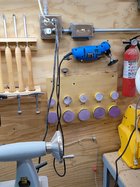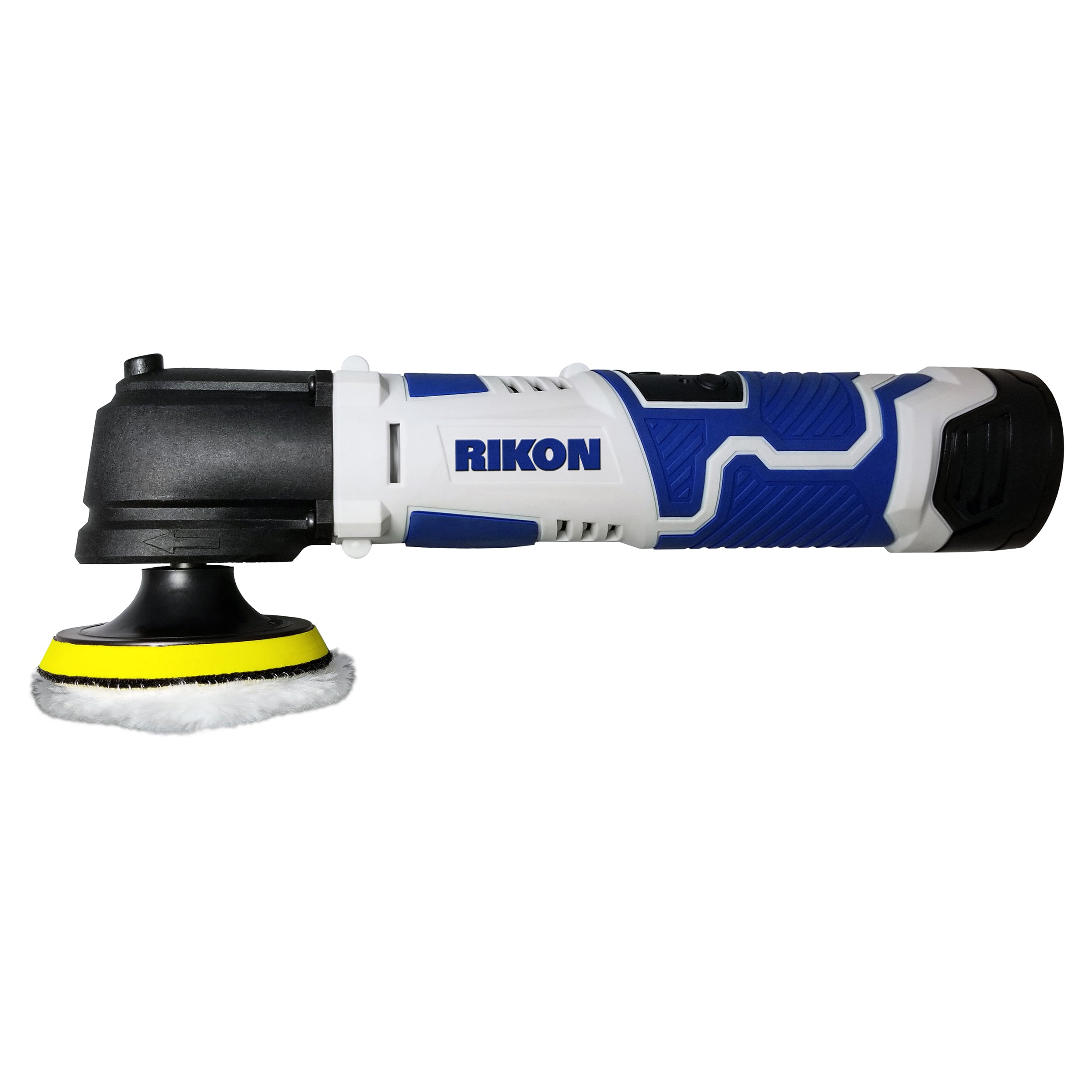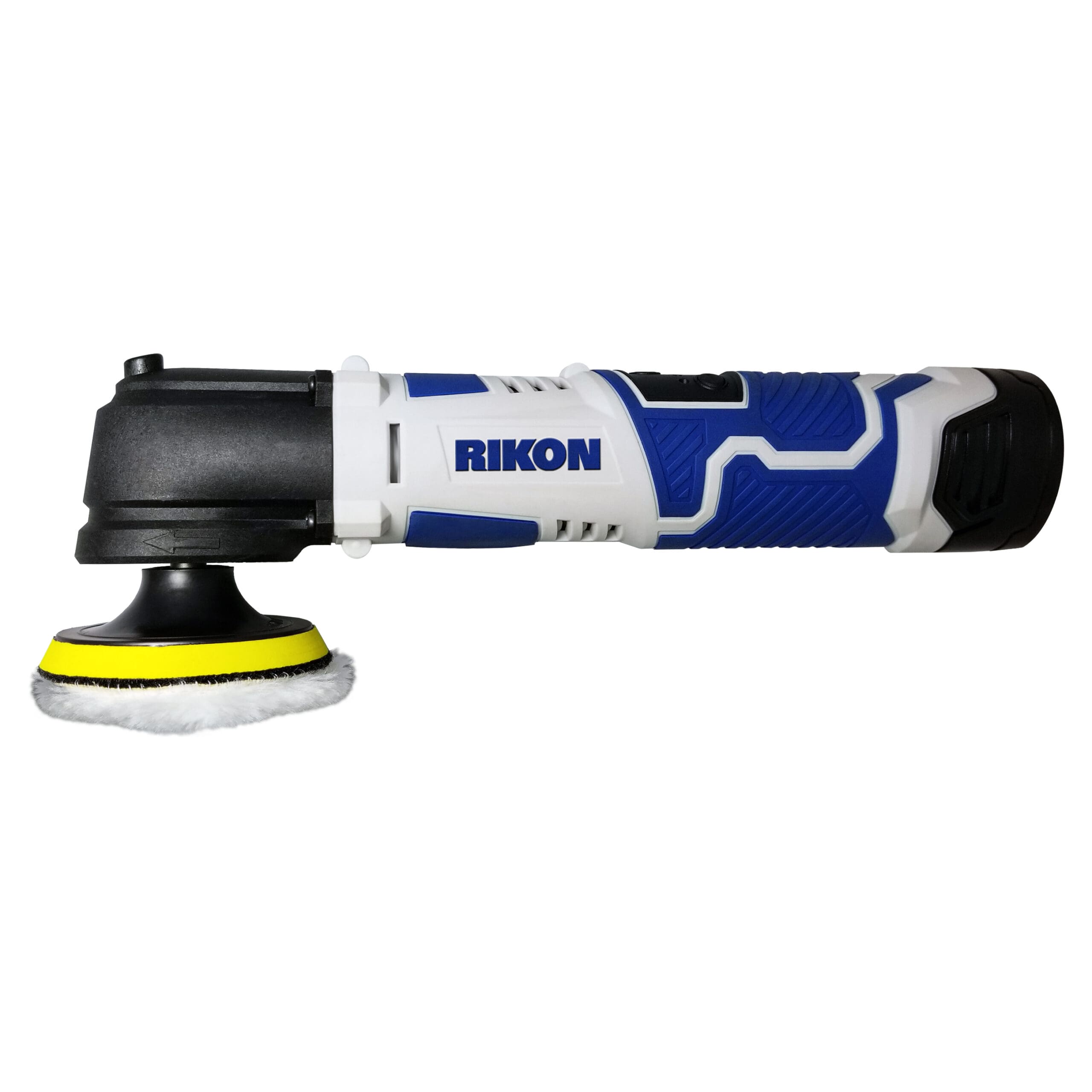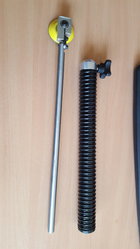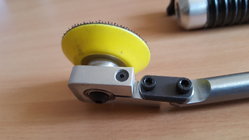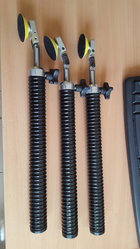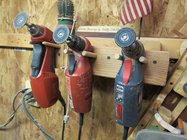Lots of options and trade offs. Generally:
Powered drill is good, especially for sanding with the lathe not rotating (like wings of a natural edge piece).
Inertia sanders are less aggressive than powered, which is often good - but sometimes not. And require the wood to be spinning.
Plain hand-held paper is easy - you probably already have a pair of hands in your shop

and always an option no matter what tool you buy.
Angled drills are good to get you closer to the work and thus more stable. They can often fit inside a bowl easier than a straight drill - but as noted not always all the way to the bottom of a deep bowl.
Electric drills are made for drilling, and many (especially less expensive ones) won't hold up to the length of time we run them for sanding. None of them like the dust.
Some have good luck with cheap electric drills - before I got my Milwaukee angle drill, I ran thru 2 or 3 of the cheap ones in as many years. Maybe 1 cheap drill per year is ok budget-wise (maybe less ok environment-wise).
Corded drills are nice except for the cord. Cordless drills are nice except for the batteries.
Pneumatic (air) sanders are good and specifically made for sanding, if you have a big enough compressor to run them.
Starting out, I would probably suggest:
Get one of the cheap angle drills (Neiko or whatever brand they are) and see if it does the job for you. When it dies, you will have enough experience to know what to get next.
Get a mini 90º die-grinder from harbor freight (they're less than $15). This is what I use (without air!) for my inertia sander - it's small, cheap, and the bearings are good. Know that it has a 1/4" collet, so you need a sanding mandrel with a round shaft rather than the hex ones.
Pick a good brand/line/vendor of sandpaper. Many were mentioned above and all are good. Buy plenty, use it liberally - sandpaper, like other tools, only works well when sharp, and it's a real pain to sharpen



